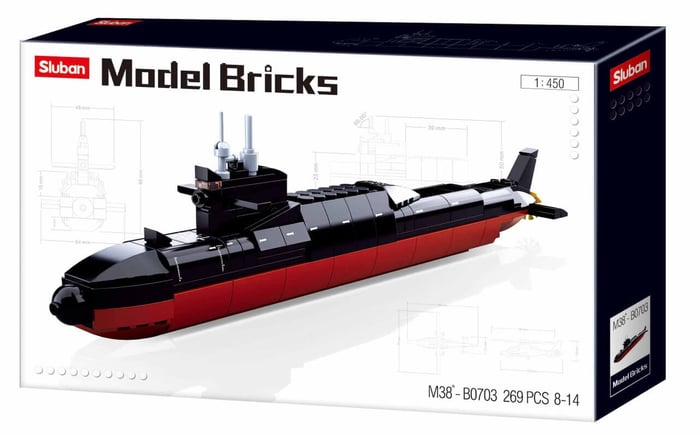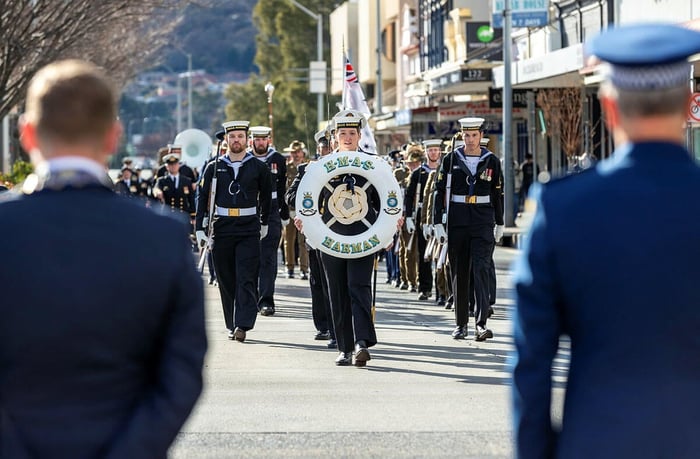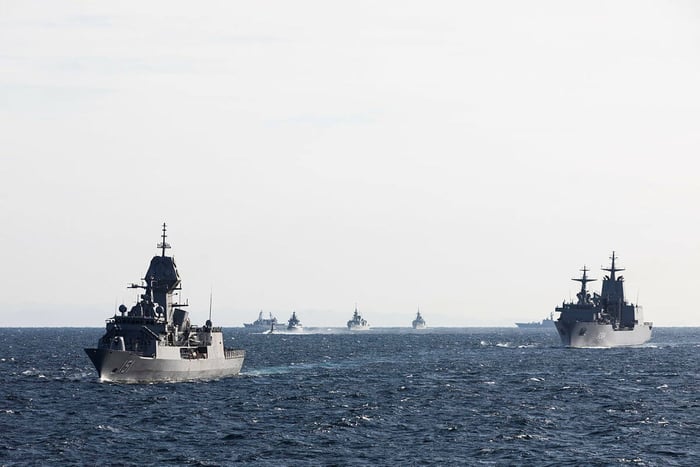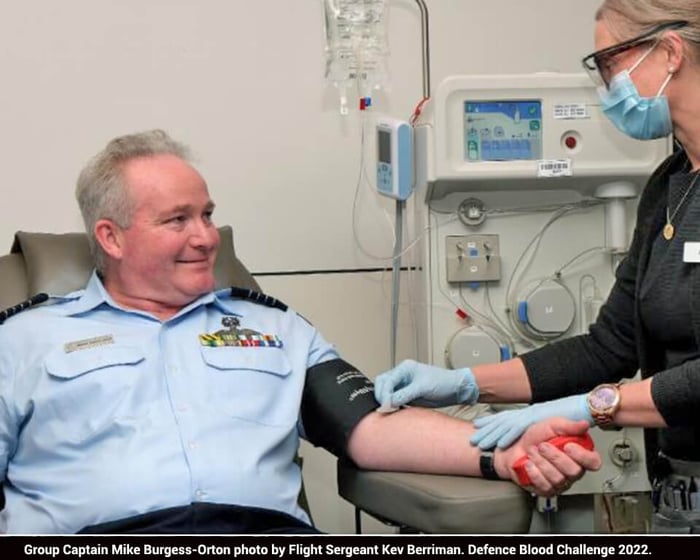
AUKUS: A Game-Changer For Australia's Naval Capabilities
The United States, United Kingdom and Australia signed the AUKUS agreement on 15 September 2021 to share nuclear propulsion technology, allowing Australia to acquire at least eight nuclear-powered submarines armed with conventional weapons. The Royal Australian Navy will decide on the design and key technologies through an 18-month research project led by Vice Admiral Jonathan Mead. Australia will acquire American or British designs that use highly enriched uranium and can power the submarines for their entire life expectancy. In the interim Australia will purchase three US Navy Virginia-class submarines to fill in the capability gap of the imminent retirement of our current Collins-class submarines. The UK and Australia will also jointly develop a new submarine, currently called the Submersible Ship – Nuclear-powered (SSN) AUKUS design for a longer-term capability.

What's The Latest on AUKUS?
In March 2023, the AUKUS pact was further developed when Australia joined the programme and additional US technology was incorporated. The planned submarine will be powered by a Rolls-Royce pressurised water reactor, and BAE Systems at Barrow-in-Furness will lead the construction of the submarine in the United Kingdom. The workforce in Barrow-in-Furness is being expanded from 10,000 to 17,000 to support both the Dreadnought-class submarine program and the AUKUS submarine.
The Osborne Naval Shipyard in South Australia is also reported to be engaged in a major part of the work. The joint leaders statement indicated that the United Kingdom would deliver its first SSN-AUKUS to the Royal Navy in the late 2030s, while Australia will deliver the first SSN-AUKUS built in Australia to the Royal Australian Navy in the early 2040s. As of March 2023, Rear Admiral Jonathan Mead, head of the Australian Nuclear Powered Submarine Task Force, said the SSN-AUKUS design was about 70 per cent mature.
Virginia-Class Acquisition
As part of the AUKUS pact, too, Australia recently announced that it will also acquire three Virginia-class submarines, they are nuclear-powered fast-attack submarines used by the United States Navy. The Virginia-class submarine is currently one of the most advanced and capable submarines in the world, and it is equipped with a wide range of advanced technologies and capabilities.
The length of the Virginia-class submarine is approximately 115 meters, and its submerged displacement is over 9000 tonnes. It is powered by a nuclear reactor, which provides virtually unlimited endurance and enables the submarine to remain submerged for very extended periods of time. The Virginia-class is equipped with a wide range of advanced sensors, including sonar, radar, and other classified detection systems, which enable it to detect and track other submarines, surface ships, and aircraft.
In addition to its sensors, the Virginia-class submarine is also equipped with a wide range of advanced weapons and systems. This includes torpedoes, cruise missiles, and other advanced weapons, as well as a large lock-in/lock-out chamber that allows for special operation teams insertions and extractions. The submarine also features advanced communications and data processing systems, which enable it to communicate with friendly submarines, surface ships, and aircraft.
Overall, the Virginia-class submarine is an extremely capable and advanced submarine, and it is a critical component of the United States Navy's fleet. As Australia acquires this class of submarine, it will significantly enhance its own submarine capabilities and strengthen its strategic position in the Asia-Pacific region.

Source: British Royal Navy, US Congressional Research Service; H I Sutton, World submarines–Covert Shores Recognition Guide, as used on SMH
What does Australia currently have in terms of submarines?
The Collins class submarines are a fleet of six diesel-electric submarines that were commissioned between 1996 and 2003 to replace the Oberon class submarines. They were built in Australia by the Australian Submarine Corporation (ASC) in Adelaide.

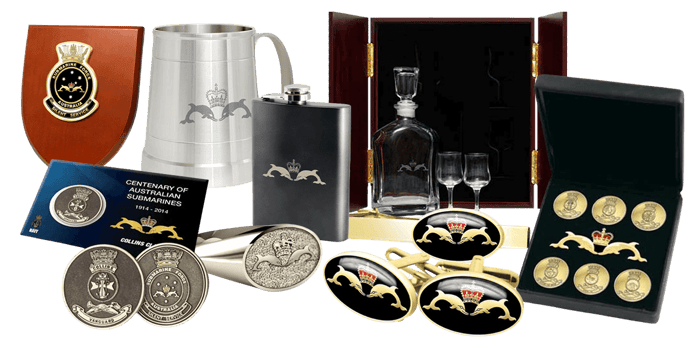 Celebrate each of the Collins-class submarines from medallions for collectors, to drinkware for enthusiast to insignia rings for the distinguished submariner. Find on Military Shop and Navy Shop.
Celebrate each of the Collins-class submarines from medallions for collectors, to drinkware for enthusiast to insignia rings for the distinguished submariner. Find on Military Shop and Navy Shop.
The Collins class submarines have a length of 77.42 meters, a width of 7.8 meters, and a draft of 7 meters. They have a displacement of 3,100 tonnes when surfaced and 3,407 tonnes when submerged. The submarines are powered by diesel-electric propulsion systems, which consist of two diesel generators and an electric motor. The Collins class submarines are armed with six 533mm torpedo tubes and can carry up to 22 torpedoes or missiles. They are also equipped with a variety of sensors, including passive and active sonars, electronic support measures, and radar. The submarines have a crew of 48, including six officers and 42 sailors.
What is the AUKUS Significance?
The AUKUS agreement represents a significant development in the global submarine industry, with Australia set to acquire some of the most advanced submarines in the world. While the purchase of the Virginia-class submarines will provide immediate benefits to Australia's submarine capabilities, the longer-term development of the SSN-AUKUS design promises to be a game-changer in the Asia-Pacific region. The collaboration between the United States, United Kingdom, and Australia demonstrates the importance of strategic partnerships in addressing complex security challenges.
Dubbed as a 'nation-building endeavour' this construction set for the littles ones will get them started on a possible submarine passion. Find it on Military Shop and Navy Shop.
What do you think of the AUKUS Pact? Is it a Yay or Nay? Let us know here.






